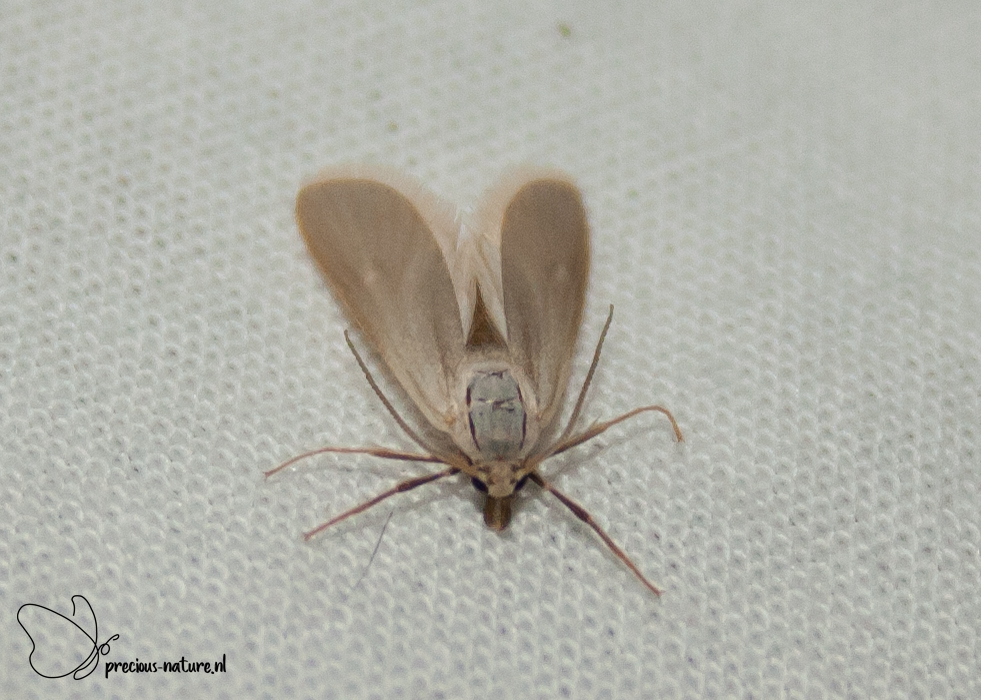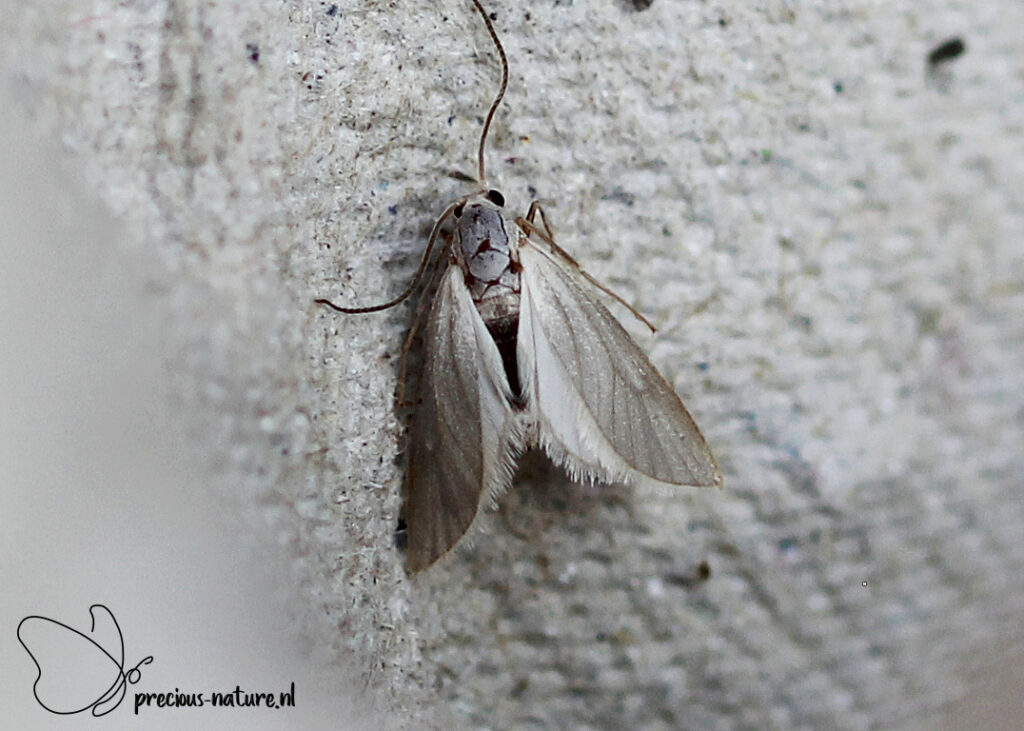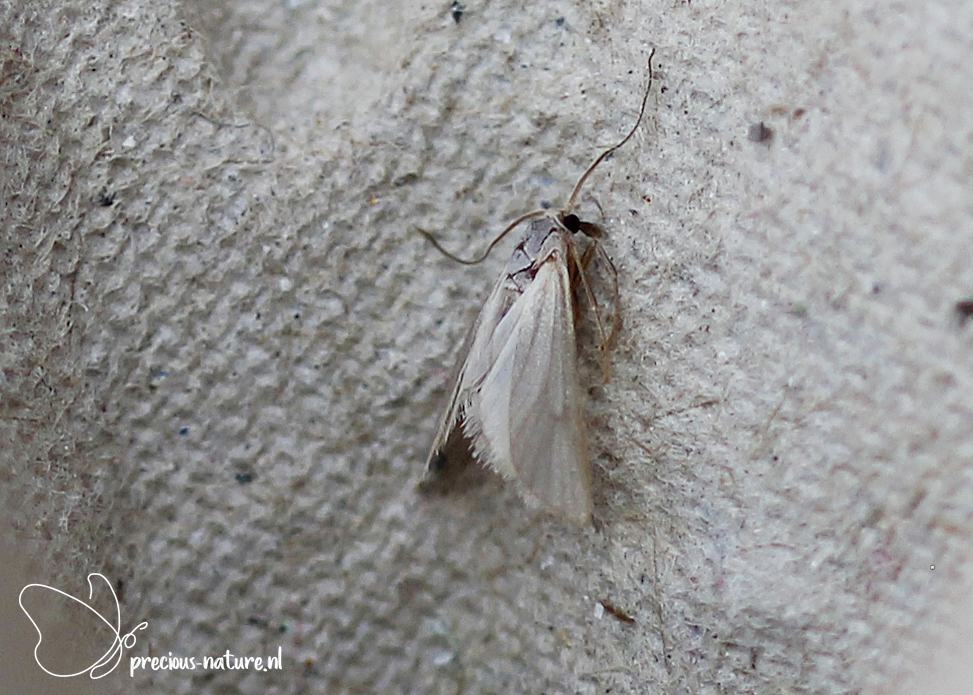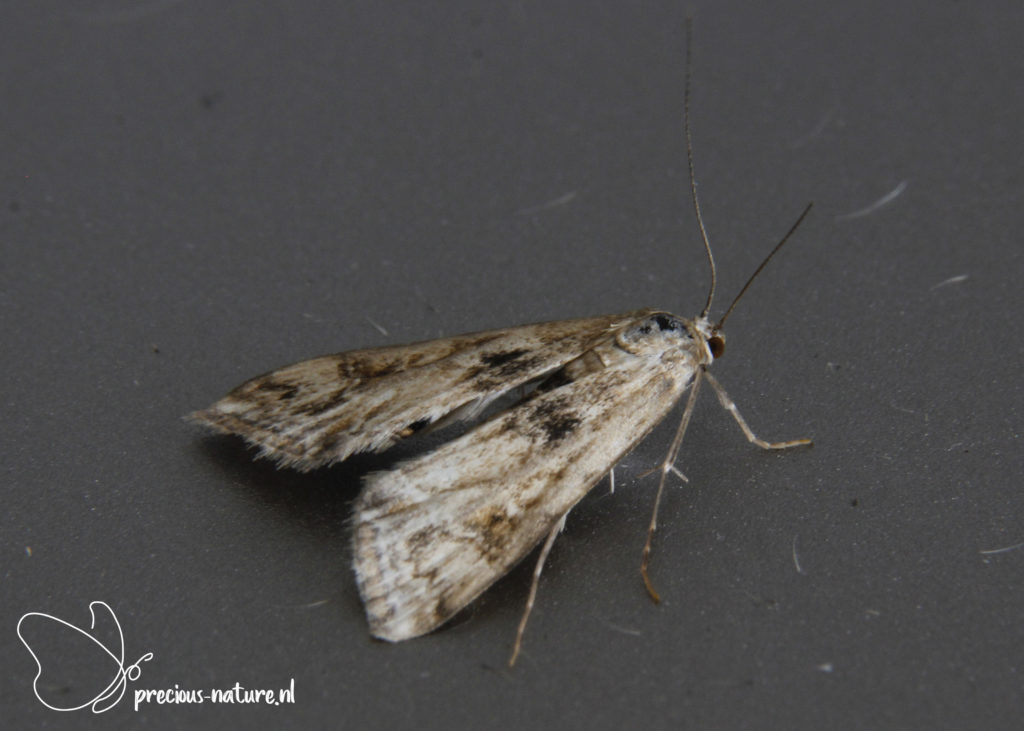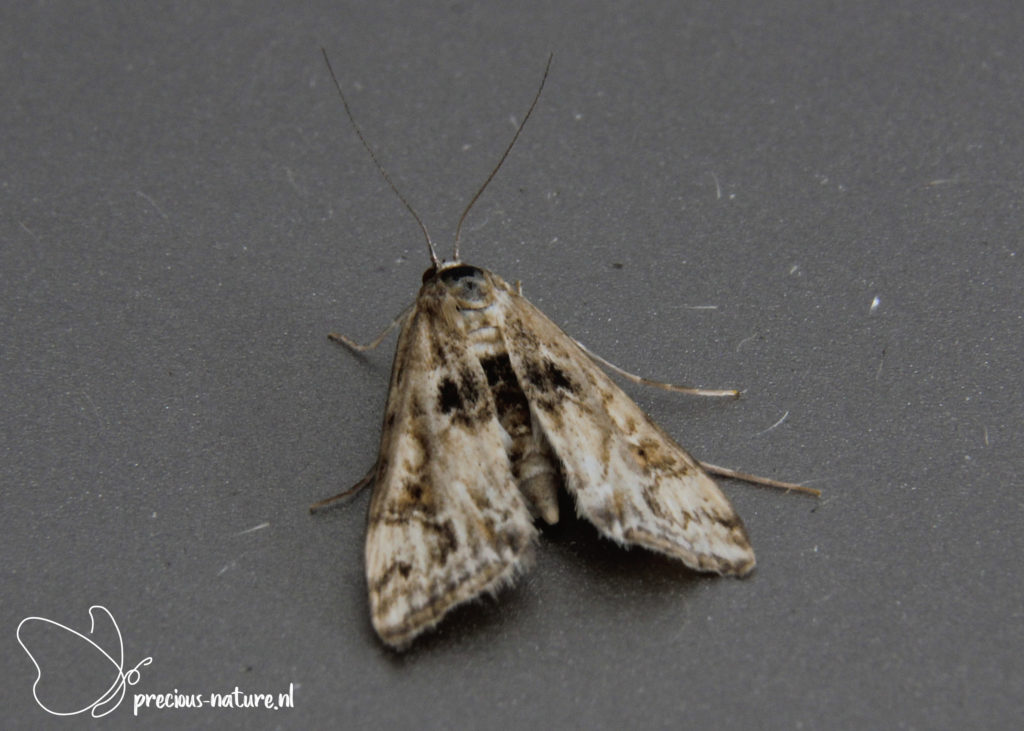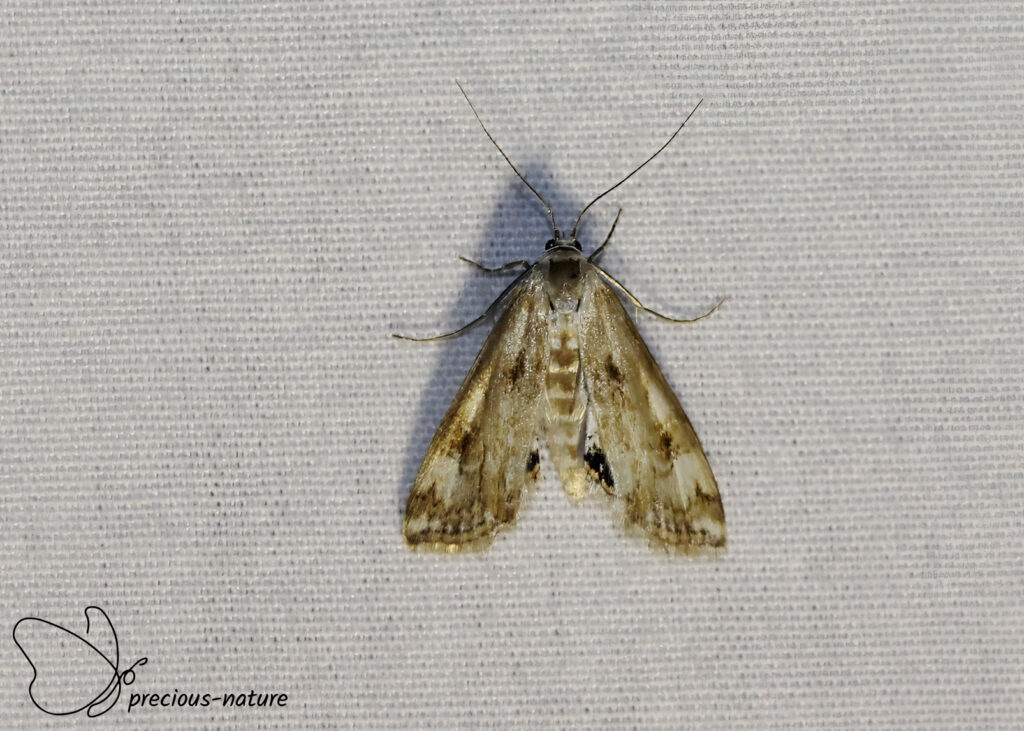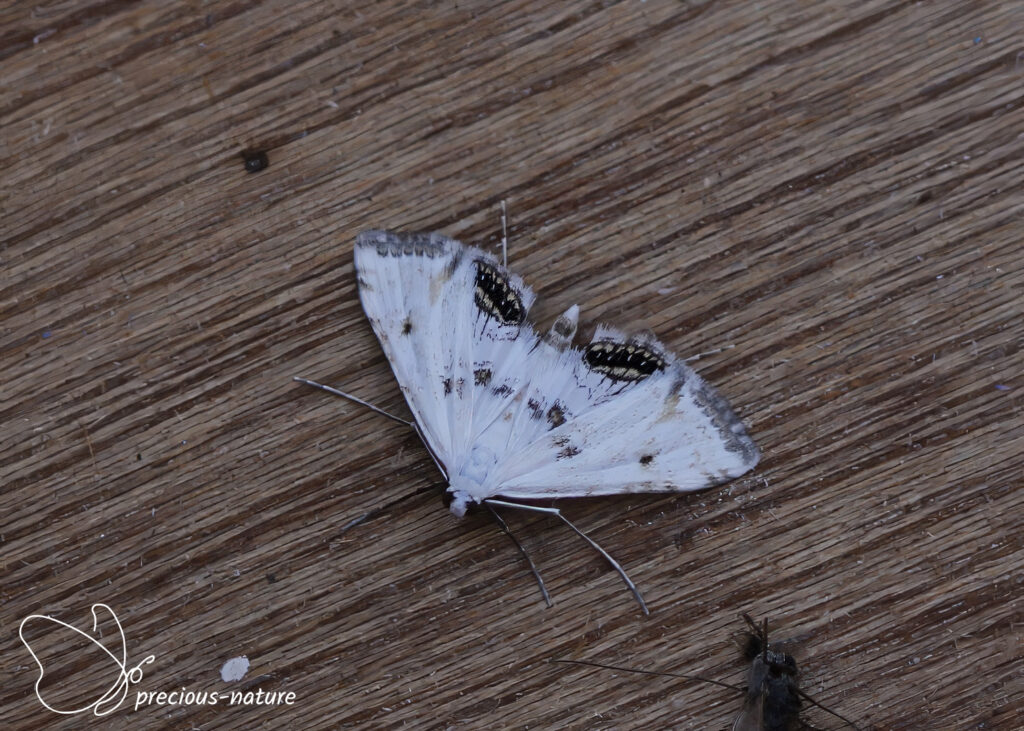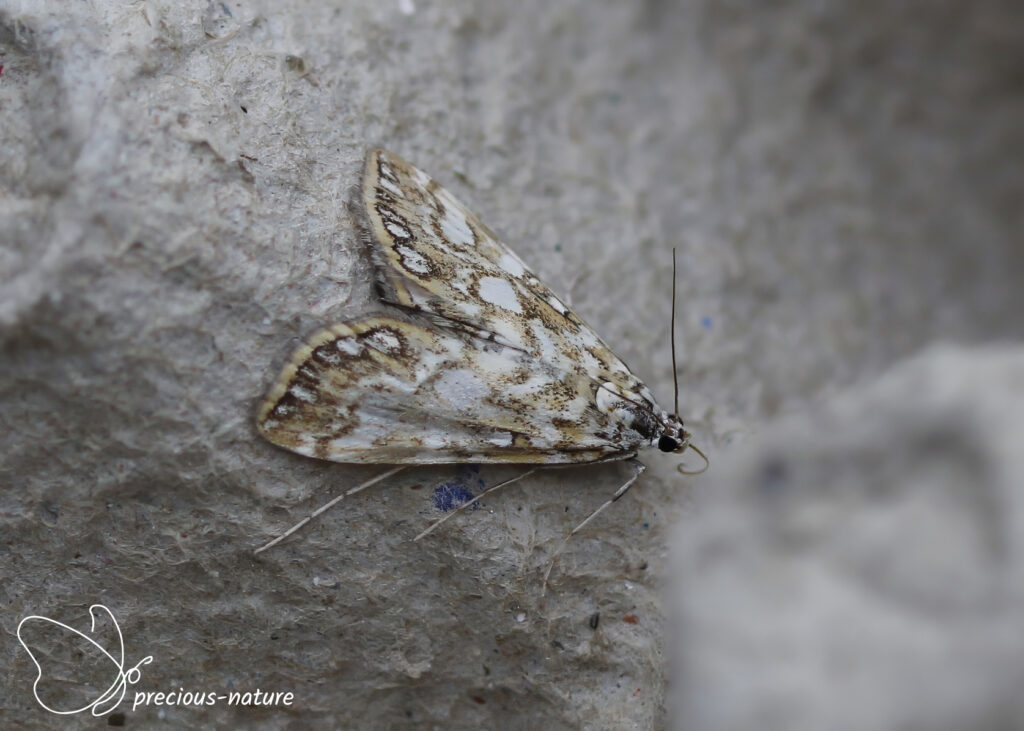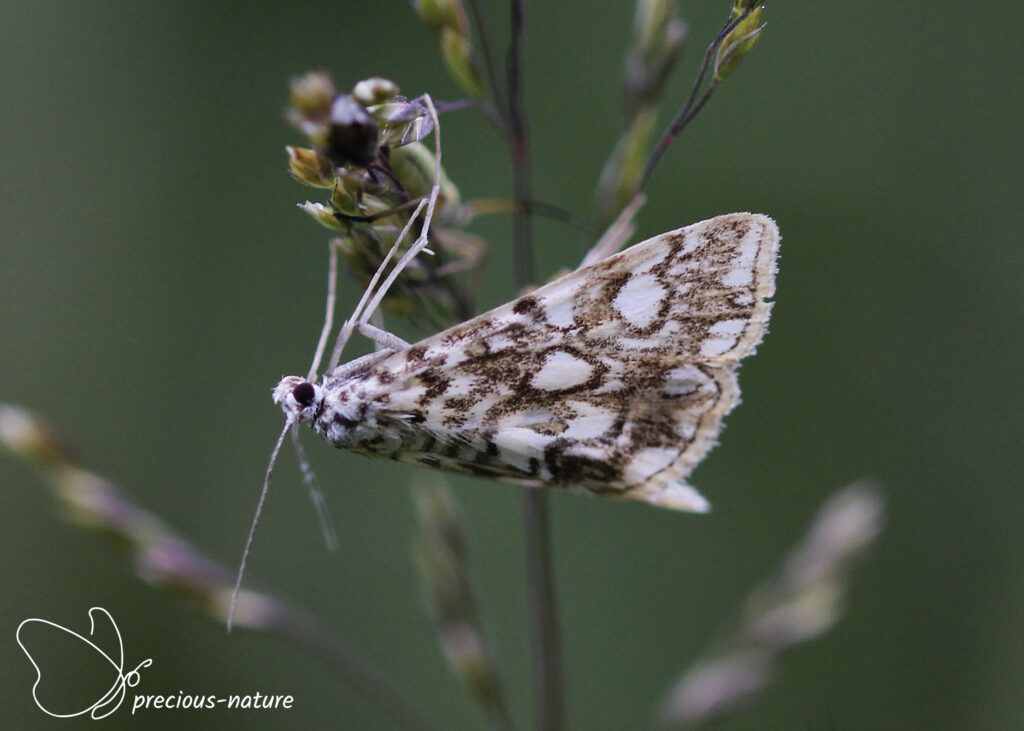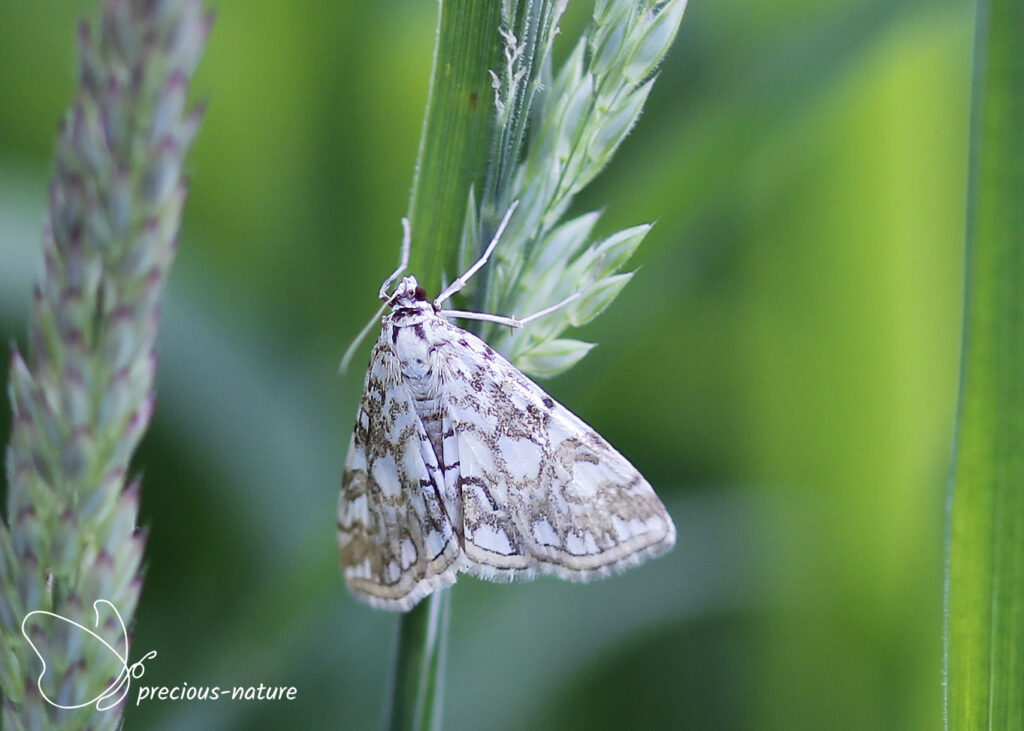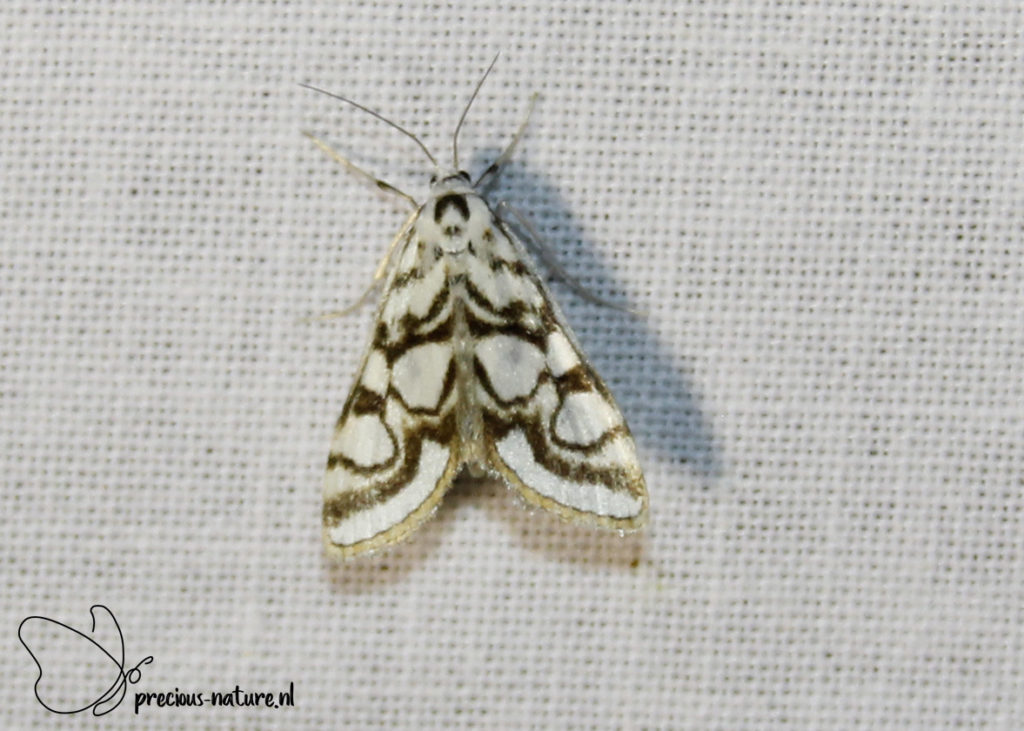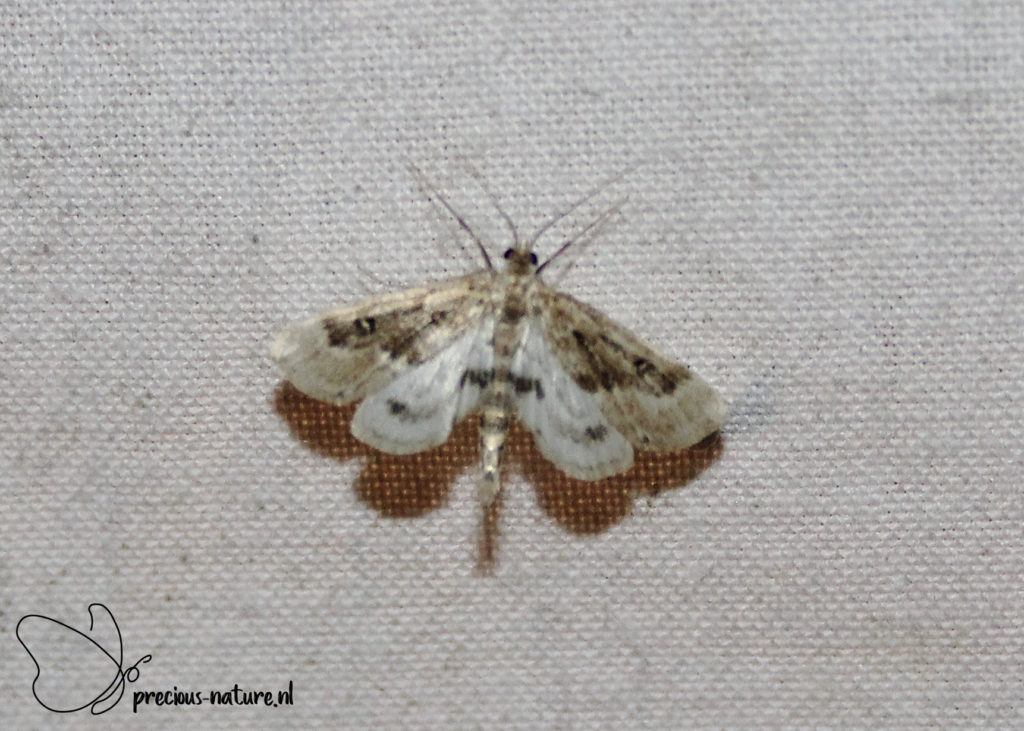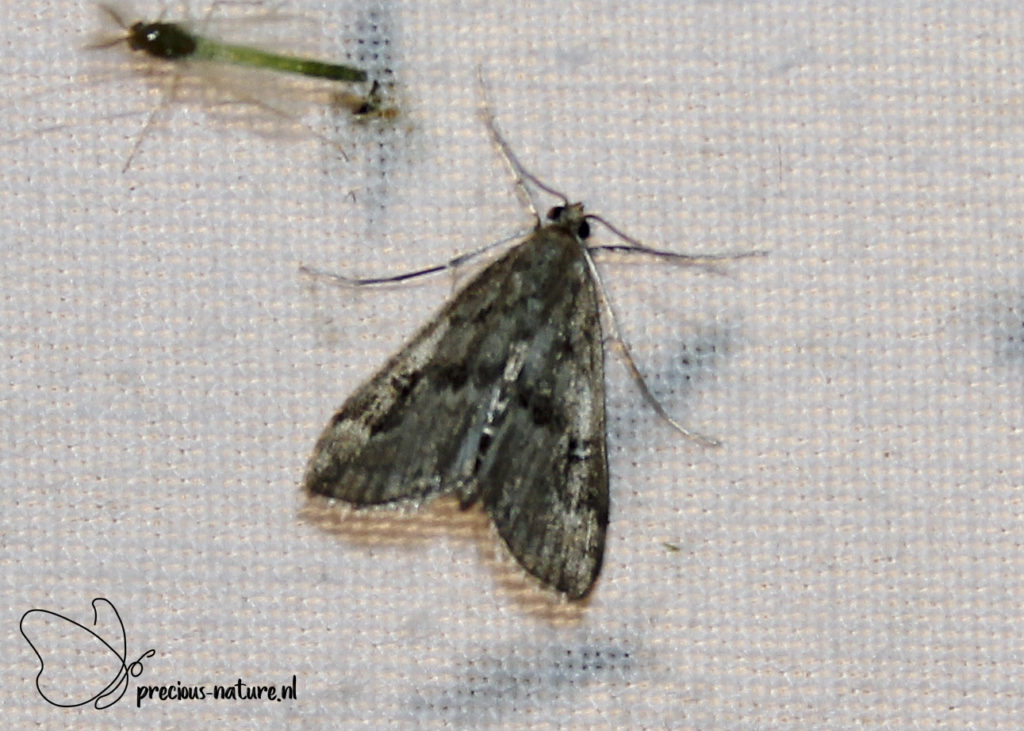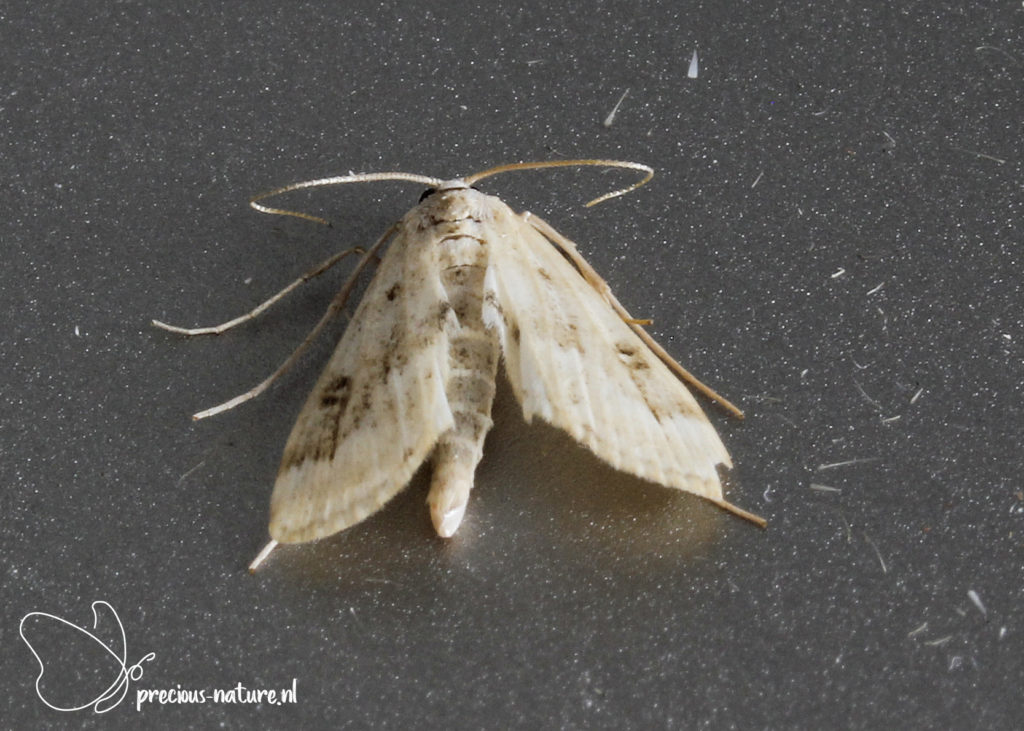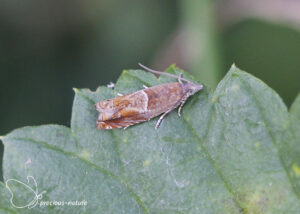Acentropinae is a subfamily of the Grass Moths (Crambidae). The species of this family are mainly found in wetlands or aquatic systems. The larvae always feed on aquatic plants, possibly in the roots underwater. A proposal has been made to change the name of the subfamily to Nymphulinae, but this has not been accepted.
Genus: Acentria
Water Veneer – 2019 (NL)
(NCBI-index: 1.666818)
A grass moth of which not much is known and which, given the habits of the females, you would not immediately expect in my backyard, is the Water Veneer (Acentria ephemerella). There are two forms of females: one with wings and one with poorly developed or almost no wings. The females with wings fly just above the water surface, and the females without wings swim on the water surface, where, in both cases, the male can provide fertilisation. The females then dive underwater to deposit their eggs on the host plant. The wings, with a rounded apex and sloping costa, are white-yellow to greyish with dark veins. The fringes are pretty long and white. The flying period is likely over two generations, from May to October, and the wingspan is 11-13 mm. The larvae are entirely aquatic and have been found at depths of up to two meters. Host plant: Waterweed, Pondweed. Dutch name: Duikermot. Frisian name: –
Flying period:

Genus: Cataclysta
Small China-mark – 2017 (NL)
(NCBI-index: 1.594245)
The Small China-mark (Cataclysta lemnata) is a small moth often found in stagnant or hardly moving water. I also caught him on the white sheet at home because he is attracted to light. The male has a white forewing, and the female is light brown. Both have a distinctive black costa on the hindwing with bluish dots. The flight time in one generation is from June to September, and the wingspan is 18-24 mm. The larvae are semi-aquatic. They build floating cases from parts of the host plant. Host plant: Duckweed. Dutch name: Kroosvlinder. Frisian name: –
Flying period:

Genus: Elophila
Brown China-mark – 2017 (NL)
(NCBI-index: 753177)
The Brown China-mark (Elophila nymphaeata) has white wings with markings of brown circles. This species is highly variable; some varieties are quite dark and appear dull, while others exhibit a distinctive pattern of white patches and streaks. The Brown China-mark looks much browner than its counterpart, the Beautiful China-mark (Nymphula nitidulata). The Brown China-mark is mainly found in grasses near lakes, ponds, or ditches. It flies in one generation from June to September and has a 22-30 mm wingspan. The larvae are entirely aquatic, bore into a leaf, and live in a floating case of two leaves. Host plant: Pondweed, Frogbit, Bur-reed. Dutch name: Waterleliemot. Frisian name: –
Flying period:

Genus: Nymphula
Beautiful China-mark – 2020 (NL)
(NCBI-index: 1.594316)
During a moth session in a wetland environment, I encountered the Beautiful China-mark (Nymphula nitidulata). The forewing is shiny white with brown markings. The intensity of the markings varies, sometimes faintly. In the wing’s centre are three large, more or less round, white spots. The hindwing is also white with a narrow brown cross band at 1/3 and a second narrow cross band closer to the termen. You can see a narrow yellow band along the termen at both the front and hindwing. The flying period in one generation is from May to the beginning of September, and the wingspan is 20-25 mm. The larvae feed just below the surface within spun leaves or in the stem. Host plant: Bur-reed. Dutch name: Egelskopmot. Frisian name: –
Flying period:

Genus: Parapoynx
Ringed China-mark – 2020 (NL)
(NCBI-index: 1.594321)
A species that you often encounter in wetlands is the Ringed China-mark (Parapoynx stratiotata). The forewing of the male is whitish with a yellow-brown shading. On 2/3, a faded brown cross band can be seen curving around a dark-ringed white spot. The male’s hindwing is white with a broken dark band. The female is usually larger than the male and has longer wings. The female’s forewing is shaded orange-brown, brown, or dark brown, with the transverse bands less noticeable. The dark-ringed white spot is often still visible. The hindwing is similar to the male but has more brown shading. The flying period in one generation is from May to October, and the wingspan is 20-24 mm for the male and 28-30mm for the female. The larvae feed on an open web in spun leaves. Host plant: Canadian Waterweed, Hornwort. Dutch name: Krabbenscheermot. Frisian name: –
Flying period:


